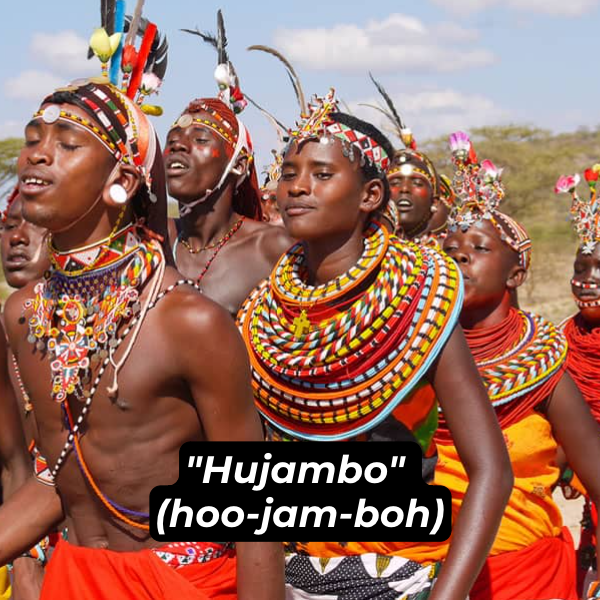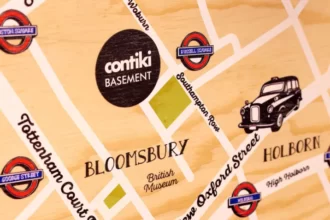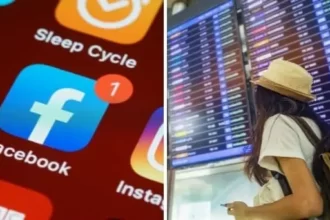Are you a travel enthusiast who loves exploring new cultures and meeting people from different backgrounds? Do you sometimes find yourself tongue-tied when trying to say hello in a foreign language? Fear not, fellow adventurers! We’ve got you covered with this ultimate guide on how to say hello in different languages with pronunciation.
Whether you’re planning your next trip abroad or simply want to impress your international friends, knowing how to greet someone in their native language can be a fun and useful skill to have. From the romantic languages of Europe to the tonal languages of Asia, this guide will take you on a linguistic journey around the world.
So, put on your travel hat and get ready to say “Hola”, “Bonjour”, “Ni hao”, and “Merhaba” like a pro. You’ll learn how to say hello in various languages and impress the locals with your language skills.
So, pack your bags, grab your passport, and get ready to say hello to the world in a whole new way. Let’s dive in!

The importance of knowing how to say hello in different languages
Knowing how to say hello in different languages can be incredibly helpful when travelling. Not only does it make it easier to communicate with people, but it also shows that you are making an effort to connect with the local culture and people.
When you are travelling in a foreign country, being able to say hello in the local language can help you to establish a connection with the people you meet. It shows that you are interested in their culture and that you respect them enough to learn a few basic phrases. It can also help you to break the ice and open up lines of communication, which can be especially important when you are trying to navigate unfamiliar situations or ask for help.
Knowing how to say hello in different languages can also make your travels more enjoyable and rewarding. When you are able to connect with local people and understand their language and culture, you gain a deeper appreciation for the places you are visiting. It can also make it easier to find your way around, get recommendations for local sights and activities, and even make new friends.
Additionally, being able to say hello in the local language can be a sign of respect and can help you to avoid any cultural misunderstandings or offensive behaviour. In some cultures, failing to greet someone properly can be seen as rude or disrespectful, so knowing the appropriate greeting is essential.
Overall, knowing how to say hello in different languages is an important skill to have when travelling. It can help you to connect with local people, show respect for their culture, and make your travels more enjoyable and rewarding.
Hello in different European languages

1. French: Bonjour (bohn-zhoor) – This is the most common way to say “hello” in French and is appropriate in any situation, formal or informal.
2. Spanish: Buenos días (bway-nos dee-as) – This literally means “good day” and is typically used as a formal greeting in the morning and early afternoon. For afternoon and evening, “buenas tardes” or “buenas noches” may be used.
3. Italian: Buongiorno (bwon-jor-no) – This is the standard way to say “good day” in Italian and can be used in formal or informal settings, especially in the morning and early afternoon.
4. German: Guten Tag (goo-ten tahg) – This literally means “good day” and is appropriate for formal situations throughout the day.
5. Portuguese: Bom dia (bohm dee-ah) – This is the standard way to say “good day” in Portuguese and is appropriate for formal situations in the morning and early afternoon.
6. Dutch: Goedendag (goh-den-dahg) – This is a formal way to say “good day” in Dutch and can be used in any formal situation, though it may be less common in some regions.
7. Russian: Здравствуйте (Zdravstvuyte) (zdrah-stvooy-tyeh) – This is the standard formal greeting in Russian and can be used at any time of day or night.
8. Swedish: God dag (go dahg) – This is a formal way to say “good day” in Swedish and is appropriate in any formal setting, though it may be less common in more casual situations.
9. Norwegian: God dag (goh dahg) – This is the standard way to say “good day” in Norwegian and is appropriate for formal settings at any time of day.
10. Greek: Καλημέρα (Kalimera) (kah-lee-mehr-ah) – This is a formal way to say “good morning” in Greek and is appropriate in any formal setting in the morning. For afternoon and evening, “kalispera” or “kalinihta” may be used.
In European cultures, the appropriate greeting may vary depending on a number of factors such as the context, the relationship between the people involved, the region or country, and even the time of day.
For instance, in formal settings, it is expected to use more formal language when greeting someone, such as addressing them by their formal title or last name. In business or academic settings, it is common to use more formal language, especially when addressing someone of higher status or position. This is often done to show respect and professionalism.
In some European cultures, it is also important to pay attention to the use of informal or formal language depending on the age or social status of the person being addressed.
For example, in some cultures, using informal language with elders or people of higher status may be seen as disrespectful or inappropriate. In such cases, it is best to use more formal language until a level of familiarity has been established.
Furthermore, the appropriate greeting can also vary depending on the time of day. In some European cultures, it is customary to use a specific greeting for different times of day.
For instance, in German-speaking countries, “Guten Morgen” (good morning), “Guten Tag” (good day), and “Guten Abend” (good evening) are commonly used greetings depending on the time of day.
In summary, the appropriate greeting in European cultures can vary depending on the context, relationship between people, region or country, age, social status, and even the time of day.
When in doubt, it is always best to err on the side of formality and use a more polite greeting until you have established the appropriate level of familiarity with the person you are addressing.
Hello in different Asian languages

1. Japanese: こんにちは (Konnichiwa) – This is a standard greeting used in most situations, especially during the day. It is suitable for both formal and informal situations.
2. Chinese (Mandarin): 您好 (Nín hǎo) – This is a polite and formal greeting, used to show respect to someone. It can be used in both personal and business situations.
3. Korean: 안녕하세요 (Annyeonghaseyo) – This is a polite and formal greeting, used in all formal situations, whether personal or professional.
4. Thai: สวัสดีครับ/ค่ะ (S̄wạs̄dii khrap/kh̄ạ) – This is a polite and formal greeting, used in all formal situations, whether personal or professional. It is important to use the correct gender-specific particle (khrap for males and kh̄ạ for females).
5. Vietnamese: Xin chào (sin chow) – This is a polite and formal greeting, used in all formal situations, whether personal or professional.
6. Hindi: नमस्ते (Namaste) – This is a polite and formal greeting, used to show respect to someone. It is suitable for both personal and business situations.
7. Bengali: নমস্কার (Nomoshkar) – This is a polite and formal greeting, used in all formal situations, whether personal or professional.
8. Malay: Selamat sejahtera (suh-lah-mat suh-jah-ter-ah) – This is a formal and respectful greeting, used in professional situations. It is also a common greeting used among Muslims.
9. Tagalog: Magandang araw po (Mah-gahn-dahng ah-rahw poh) – This is a formal greeting that is used throughout the day. “Po” is added to show respect to the person being greeted.
10. Indonesian: Selamat pagi (Suh-lah-mat pah-gee) – This is a formal greeting that is used in the morning. “Selamat siang” is used in the afternoon, and “Selamat malam” is used in the evening.
In many Asian cultures, using a formal greeting is not only about the words used but also about the accompanying gestures or actions that convey respect and politeness.
For example, in Japan, it is common to bow when greeting someone in a formal setting. The depth of the bow can indicate the level of respect being shown.
In South Korea, people may bow and place one hand over the other when greeting someone of higher status.
In China, it is customary to use formal titles or honorifics when addressing someone of higher status, such as “老师” (lǎo shī) for teacher or “先生” (xiān shēng) for Mr. In addition to using the correct title, it may also be appropriate to bow or nod as a sign of respect.
In many Southeast Asian countries, such as Thailand and Indonesia, the traditional greeting involves placing the palms together in front of the chest, similar to a prayer position, and bowing slightly. This gesture is called the “wai” in Thailand and the “salam” in Indonesia. The level of bow or the height of the hands can vary depending on the level of respect being shown.
It’s important to research and understand the appropriate customs and traditions for a particular culture before using a formal greeting. Not using the appropriate gesture or action could be seen as disrespectful or impolite, even if the words used are correct.
By taking the time to understand and observe the customs of a particular culture, you can show respect and build better relationships with people from different backgrounds.
Hello in different Middle Eastern languages

1. Arabic: السلام عليكم (as-salāmu ʿalaykum) – This is the most common and widely used greeting in Arabic, and is appropriate for both formal and informal situations. It is a way of wishing peace upon the person you are greeting.
2. Persian (Farsi): سلام علیکم (salam aleikum) – This is the most common formal greeting in Persian, and is appropriate for both formal and informal situations. It is also a way of wishing peace upon the person you are greeting.
3. Hebrew: שלום (Shalom) – This is the most common formal greeting in Hebrew, and is appropriate for both formal and informal situations. It is also a way of wishing peace upon the person you are greeting.
4. Turkish: Merhaba – This is the most common formal greeting in Turkish, and is appropriate for both formal and informal situations. It is a way of wishing “good day” to the person you are greeting.
5. Kurdish: Silav (or silav dibê) – This is a formal greeting in Kurdish, and is appropriate for both formal and informal situations. It is a way of wishing “greetings” to the person you are greeting.
The Middle East is a diverse region with many different languages and cultures, and as such, there is no one-size-fits-all approach to greetings. What is considered an appropriate greeting in one country or region may not be appropriate in another.
For example, the formal greeting in Arabic, “as-salāmu ʿalaykum,” is commonly used throughout the Arab world, but there may be variations in pronunciation or usage depending on the specific dialect or country.
It’s always a good idea to research the appropriate formal greeting for a particular language and context before using it. This can be especially important when travelling to a new place or meeting someone from a different culture, as using the wrong greeting could be seen as disrespectful or offensive. In addition to formal greetings, there may also be cultural norms and expectations around non-verbal cues, such as eye contact or physical touch, that should be taken into account.
It’s also worth noting that greetings can vary depending on the context of the interaction. For example, a more formal greeting may be appropriate in a business setting, while a more informal greeting may be appropriate in a social setting. When in doubt, it’s always best to err on the side of formality and follow the lead of the person you are greeting.
Hello in different African languages

1. Swahili: Hujambo (hoo-jam-boh) – This is a formal way to say hello in Swahili and can be used to greet someone you are meeting for the first time or someone you are addressing with respect, such as an elder or someone in a position of authority.
2. Zulu: Sawubona (sah-wu-boh-nah) – This is a formal greeting in Zulu and can be used to show respect when greeting an elder, someone in a position of authority, or someone you are meeting for the first time.
3. Xhosa: Molo (moh-loh) – This is a formal way to say hello in Xhosa and can be used to greet someone you are meeting for the first time or someone you want to show respect to.
4. Amharic: Selam (seh-lahm) – This is a formal greeting in Amharic and can be used in formal settings or when addressing someone you want to show respect to, such as an elder or someone in a position of authority.
5. Hausa: Sannu (sahn-nu) – This is a formal greeting in Hausa and can be used to show respect when greeting an elder, someone in a position of authority, or someone you are meeting for the first time.
6. Yoruba: Pele (peh-leh) – This is a formal greeting in Yoruba and can be used to show respect when greeting an elder, someone in a position of authority, or someone you are meeting for the first time.
7. Somali: Iska waran (is-kah wah-ruhn) – This is a formal greeting in Somali and can be used to show respect when greeting an elder, someone in a position of authority, or someone you are meeting for the first time.
8. Igbo: Ndewo (en-deh-woh) – This is a formal greeting in Igbo and can be used to show respect when greeting an elder, someone in a position of authority, or someone you are meeting for the first time.
9. Oromo: Akkam (ah-kahm) – This is a formal greeting in Oromo and can be used to show respect when greeting an elder, someone in a position of authority, or someone you are meeting for the first time.
10. Tigrinya: Selam (seh-lahm) – This is a formal greeting in Tigrinya and can be used to show respect when greeting an elder, someone in a position of authority, or someone you are meeting for the first time.
In African culture, formal greetings play an important role in showing respect and establishing social connections.
Different languages and cultures in Africa have their own unique ways of greeting people formally, and these greetings can vary depending on a variety of factors, such as the person’s age, gender, social status, and relationship to the person being addressed.
For example, in many African cultures, it is customary to greet an elder or someone in a position of authority with a more formal and respectful greeting than you would use with someone of your own age or social status. Similarly, if you are meeting someone for the first time, it is common to use a more formal greeting to establish respect and show that you are interested in building a positive relationship.
It is also worth noting that African languages are often spoken across multiple countries and regions, and the specific dialects and variations can differ significantly. For this reason, it’s important to research the appropriate formal greeting for a particular language and context before using it.
FAQs
Knowing how to say hello in different languages can be extremely useful for young travellers.
When travelling to different countries, young travellers often encounter people from diverse cultures and backgrounds, and being able to greet them in their native language can be a great way to break the ice and start a conversation.
By knowing how to say hello in different languages, young travellers can also show respect for the local culture and demonstrate their interest in learning about the people they meet. This can help build trust and foster positive relationships, which is especially important when travelling to places where you may be seen as an outsider or tourist.
In addition to helping young travellers make connections and build relationships with people from different cultures, knowing how to say hello in different languages can also be a practical skill for getting around and finding your way in a new place. It can help you navigate local transportation, find your way to landmarks or attractions, and even order food or make purchases.
When trying to say hello in different languages, it’s important to be aware of potential mistakes that can occur. One common mistake is mispronouncing the word, which can make it difficult for the person you are greeting to understand you. Learning the correct pronunciation is essential for effective communication.
Another common mistake is using the wrong tone or context. For example, in some cultures, it’s common to use a more formal greeting when meeting someone for the first time, while in others, a casual greeting may be appropriate.
It’s important to research the appropriate greeting for the language and context before using it, so that you can avoid giving offence or appearing disrespectful.
Using an informal greeting in a formal situation is also a mistake that many people make. In some cultures, it’s considered disrespectful to use an informal greeting with someone who is older, in a position of authority, or someone you do not know well. In other cultures, a more informal greeting may be appropriate in most situations.
Understanding the appropriate greeting for the context can help you make a good first impression and build better relationships with people from other cultures.
When traveling or interacting with people from different cultures, it’s important to be aware that some greetings may be considered inappropriate or even offensive in certain contexts.
This is because greetings are not just words, but they also carry cultural meanings and values.
For example, in some cultures, using a casual greeting with someone who is older or in a position of authority can be seen as disrespectful. This is because respect for elders and authority figures is an important cultural value in these societies. Using a more formal greeting, such as “sir” or “madam,” may be more appropriate in these situations.
Another example is using the wrong tone or context when greeting someone. For instance, in some cultures, a very enthusiastic or loud greeting can be seen as inappropriate or even rude, while in other cultures, a more energetic greeting is expected.
It’s important to research and understand the cultural norms of the language and context before using a greeting.
In addition, it’s important to be aware of any cultural or historical sensitivities that may affect the use of certain greetings. For instance, in some cultures, using a greeting that is associated with a colonial past or a historical conflict may be considered offensive. This can vary depending on the specific context and individuals involved.
To avoid any misunderstandings or cultural faux pas, it’s important to research the appropriate greeting for the language and context before using it. This can involve talking to native speakers, consulting cultural guides or language resources, or even seeking advice from a cultural expert or consultant. By taking the time to learn about different cultural norms and values, we can show respect for others and build better relationships across cultures.
In addition to learning how to say “hello” in different languages, here are some other useful phrases that you can learn when trying to communicate in another language:
Please – This is a polite way to make a request or ask for something.
Thank you – This is a way to express gratitude or appreciation.
Excuse me – This is a polite way to get someone’s attention or to apologise.
How are you? – This is a common way to start a conversation and show interest in the other person.
Goodbye – This is a way to say farewell or to end a conversation.
Learning these basic phrases can help you communicate more effectively with people from different cultures and show that you respect their language and customs.
If you’re planning on travelling and want to practice saying hello in different languages before your trip, here are a few suggestions:
Use language-learning apps or websites: There are many language-learning apps and websites that offer courses and resources for learning basic greetings in different languages. Some popular options include Duolingo, Babbel, and Memrise.
Watch videos: Watching videos of native speakers saying hello in different languages can help you learn the correct pronunciation and context for each greeting. You can find these videos on YouTube or other video-sharing platforms.
Listen to language podcasts: There are many language podcasts that focus on teaching basic phrases and vocabulary for travellers. These can be a great way to practice saying hello in different languages while on-the-go.
Attend language classes or conversation groups: If you have the time and resources, attending a language class or conversation group can be a great way to practice speaking with native speakers and get feedback on your pronunciation and usage.
Practice with friends or family: If you have friends or family members who speak different languages, you can practice saying hello with them. This can be a fun and low-pressure way to practice and get feedback on your pronunciation.
By practicing saying hello in different languages before your trip, you’ll be better prepared to communicate with locals and show respect for their culture and language.
Conclusion
In conclusion, saying hello in different languages is a great way to expand your cultural knowledge and connect with people from all around the world. Learning a few basic greetings in a variety of languages can also make your travels more enjoyable and meaningful.
Remember to practice the correct pronunciation to ensure that you’re understood and to show respect for the language and the people who speak it. With pronunciation in mind, go ahead and try out some of these different ways to say hello!






